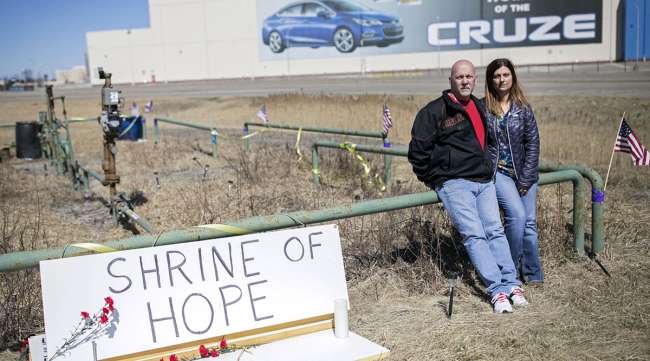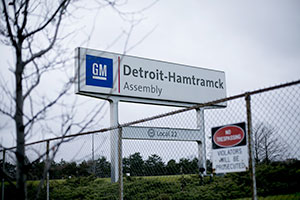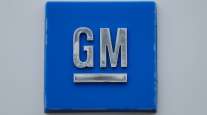GM Is Now Detroit’s Smallest Auto-Making Employer

[Stay on top of transportation news: Get TTNews in your inbox.]
General Motors Co. now employs fewer union-represented American workers than its domestic rivals for the first time since the United Auto Workers started organizing Detroit’s carmakers eight decades ago.
GM’s 46,000 UAW workers trails Ford Motor Co. by about 9,000 and Fiat Chrysler Automobiles NV by roughly 1,200, according to headcounts provided by the companies. Ford surpassed GM in 2014, and Fiat Chrysler overtook the No. 2 spot this year.
GM’s fall to third place is a dubious distinction for a company that’s been criticized by “America first” President Donald Trump. The company is also negotiating a new labor contract this year with UAW leaders who have vowed a take-no-prisoners approach to bargaining after an embarrassing corruption scandal.
Once the largest private-sector employer in the U.S., former GM President Charles Wilson famously said in the 1950s that “what was good for our country was good for General Motors, and vice versa.” But in recent decades, GM has downsized its domestic factory network and increased production in markets including China and Mexico.
“GM was historically the largest by far,” said Ron Harbour, senior vice president overseeing global automotive manufacturing for consultant Oliver Wyman. “But they cut a lot of plants in the U.S. during bankruptcy. They have a quarter of the plants they had in the 1970s.”

Anthony Lanzilote/Bloomberg News
Blazer Blame
The issue of employment has dogged GM this year. The company has closed its car plant in Lordstown, Ohio, and stopped transmission output at a factory in Warren, Mich., and two other U.S. plants are at risk of being shut down. The restructuring drew the ire of Trump and Democratic primary front-runner Joe Biden and is a focal point for the UAW in talks for a new four-year labor deal.
GM has also taken heat from the union for the company’s decision to build high-margin sport utility vehicles including the Chevrolet Blazer in Mexico. The start of production of that vehicle last year helped GM overtake Japan’s Nissan Motor Co. as Mexico’s top carmaker, according to Automotive News.
The union is expected to press for additional investment in U.S. plants and job security guarantees for American workers. During an event at GM’s plant in Orion, Mich., in March, Terry Dittes, the vice president overseeing the union’s GM department, vowed to fight to keep jobs for workers in Lordstown and other factories marked for possible closure.
GM also has offered all of the 2,800 union workers at the plants at risk of closing a job in another U.S. factory. The company is aiming for a deal with the UAW that won’t destabilize its operations as global sales slow.
“GM’s focus during negotiations is to reach an agreement that builds a strong future for our employees and our business,” spokesman David Barnas said in an email.
Domestic Downsizing
At its peak forty years ago, GM employed 618,365 Americans, including 511,000 hourly workers. That was back when the automaker did much of its parts production in-house. That business became Delphi Corp., the forerunner of what is now Aptiv Plc and Delphi Technologies Plc. At the time of the spinoff in 1999, Delphi employed 43,150 UAW members — nearly as many as GM does now.
The financial crisis a decade ago played a major role in downsizing the company. GM had so much excess production when the company filed for bankruptcy in 2009 that the automaker closed 14 plants and cut thousands of workers. In recent years, GM has trimmed more jobs at passenger-car plants as sales of sedans industrywide have cratered.
While GM is a shadow of what it once was in the U.S. in terms of payroll and vehicle production, since emerging from bankruptcy, the $23 billion that it’s invested in the U.S. is nearly five times the amount it has spent in Mexico. And the company’s 16,000 employee count in Mexico is roughly just one-third the size of its U.S. workforce.
Fiat Chrysler Rebound
In 2011, GM had 46,000 UAW workers, more than Ford’s 41,000 and Fiat Chrysler’s 23,150, according to data from the Ann Arbor, Michigan-based Center for Automotive Research.
Over the past eight years, Fiat Chrysler has increased market share and added U.S. production of Ram pickups and Jeep SUVs. The company’s headcount of 47,200 is more than double the number Chrysler employed when it was sold to Italy’s Fiat SpA in 2009. It’s poised to add 3,850 jobs at a new plant in Detroit scheduled to start production next year of a new three-row Jeep SUV.
“Fiat Chrysler has had an incredible rebound,” said Kristin Dziczek, an analyst with CAR. “GM has had to cut since then, and they are now the number one exporter of vehicles to the U.S. from Mexico.”




